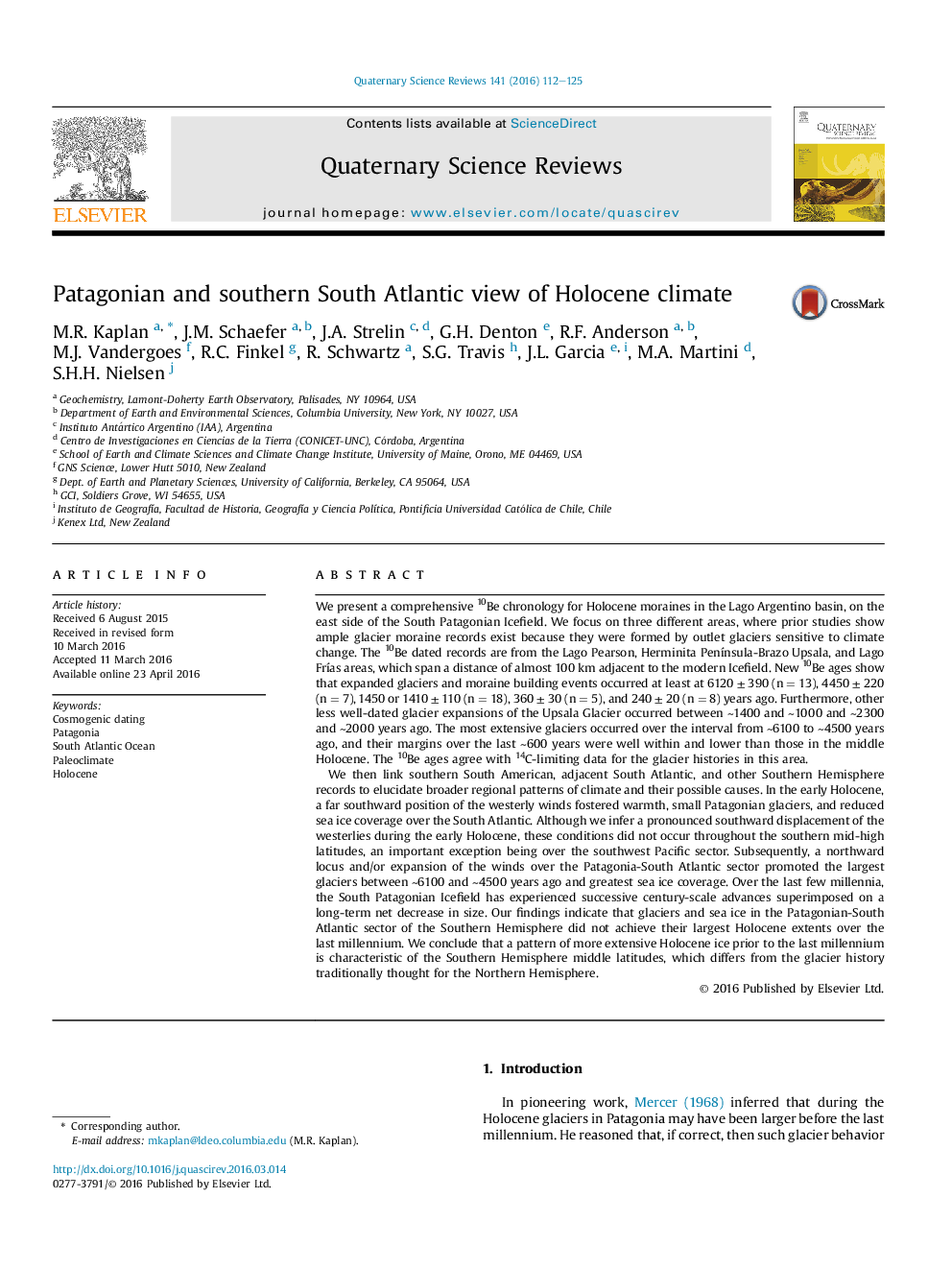| کد مقاله | کد نشریه | سال انتشار | مقاله انگلیسی | نسخه تمام متن |
|---|---|---|---|---|
| 4735254 | 1640794 | 2016 | 14 صفحه PDF | دانلود رایگان |
• 10Be dating of Holocene moraines formed by the South Patagonian Icefield.
• The most extensive outlet glaciers occurred from ∼6100 to ∼4500 years ago.
• Linking Patagonian and South Atlantic records reveals broad paleoclimate patterns.
• Extensive Holocene before 1000 years ago is characteristic of the Southern Hemisphere.
We present a comprehensive 10Be chronology for Holocene moraines in the Lago Argentino basin, on the east side of the South Patagonian Icefield. We focus on three different areas, where prior studies show ample glacier moraine records exist because they were formed by outlet glaciers sensitive to climate change. The 10Be dated records are from the Lago Pearson, Herminita Península-Brazo Upsala, and Lago Frías areas, which span a distance of almost 100 km adjacent to the modern Icefield. New 10Be ages show that expanded glaciers and moraine building events occurred at least at 6120 ± 390 (n = 13), 4450 ± 220 (n = 7), 1450 or 1410 ± 110 (n = 18), 360 ± 30 (n = 5), and 240 ± 20 (n = 8) years ago. Furthermore, other less well-dated glacier expansions of the Upsala Glacier occurred between ~1400 and ∼1000 and ∼2300 and ∼2000 years ago. The most extensive glaciers occurred over the interval from ∼6100 to ∼4500 years ago, and their margins over the last ∼600 years were well within and lower than those in the middle Holocene. The 10Be ages agree with 14C-limiting data for the glacier histories in this area.We then link southern South American, adjacent South Atlantic, and other Southern Hemisphere records to elucidate broader regional patterns of climate and their possible causes. In the early Holocene, a far southward position of the westerly winds fostered warmth, small Patagonian glaciers, and reduced sea ice coverage over the South Atlantic. Although we infer a pronounced southward displacement of the westerlies during the early Holocene, these conditions did not occur throughout the southern mid-high latitudes, an important exception being over the southwest Pacific sector. Subsequently, a northward locus and/or expansion of the winds over the Patagonia-South Atlantic sector promoted the largest glaciers between ∼6100 and ∼4500 years ago and greatest sea ice coverage. Over the last few millennia, the South Patagonian Icefield has experienced successive century-scale advances superimposed on a long-term net decrease in size. Our findings indicate that glaciers and sea ice in the Patagonian-South Atlantic sector of the Southern Hemisphere did not achieve their largest Holocene extents over the last millennium. We conclude that a pattern of more extensive Holocene ice prior to the last millennium is characteristic of the Southern Hemisphere middle latitudes, which differs from the glacier history traditionally thought for the Northern Hemisphere.
Journal: Quaternary Science Reviews - Volume 141, 1 June 2016, Pages 112–125
